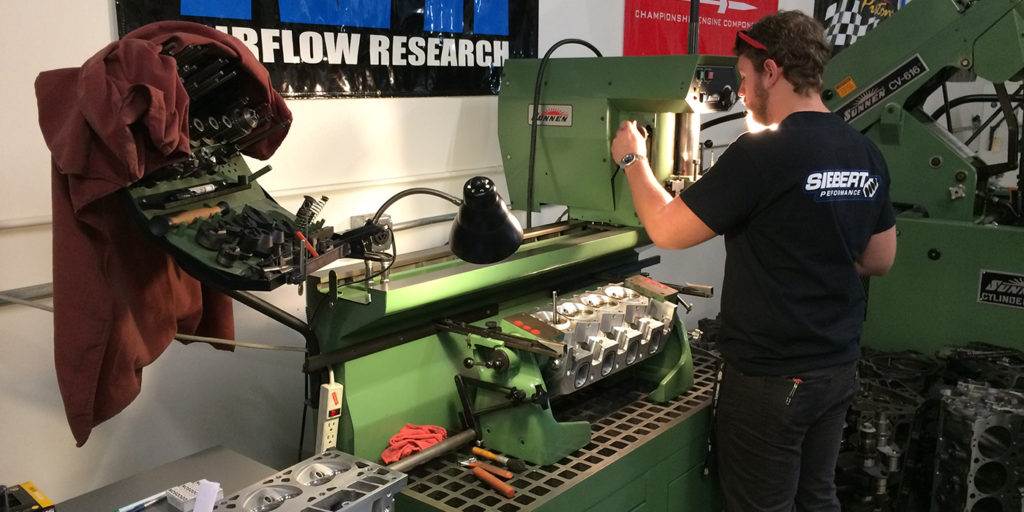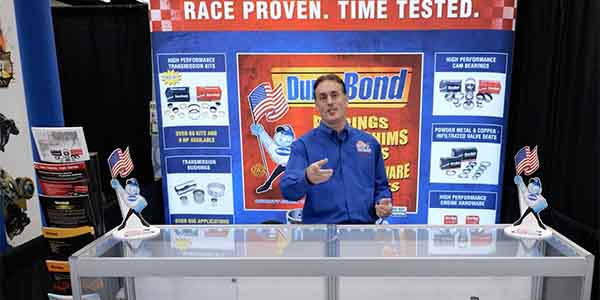For more than 40 years, we have surveyed shops in our Machine Shop Market Profile and found that servicing cylinder heads rank up near the top of the “jobs most-performed” list, with the almighty valve job front and center. Do it well, and your profits and reputation for doing quality work will thrive – but do it poorly, and you’ll likely have to do it over again.
Machining tolerances have gotten smaller without a doubt, and the tools engine builders use to perform valve seat and guide work has followed suit. Basic-level “drill press” style seat and guide machines have their limitations compared to some of the more advanced machines; however, some shops are still using them. Those may be better for lawn and garden equipment, but if you work on high-performance or late-model heads, they require tighter tolerances than these machines can reliably hold.
According to Rottler’s Ed Kiebler, tolerances have been cut by at least 50% over the years. “Due largely to powerhead that floats above the chips and grit, along with lighter powerheads that center more easily. Those improvements have brought the tolerances from .001˝ to .0015˝ to .0005˝. Newer technology, where we rough the seat in and then with only a few thousandths to go recenter again, has brought those tolerances to even lower levels.”
Your new equipment should pay for itself in the long term rather than what you can afford right now. Look for a machine that will make you money and give you a solid return on your investment. You should always strive to improve the quality of your work, which will, in turn, boost your profitability.
While many machines look similar, the most significant differences are in the type of pilot system used (i.e., “live” pilot vs. “fixed” pilot), fixturing. Most valve seat and guide machines come with an air float head to allow quick repositioning. A tilting head aligns the spindle with the guide in the cylinder head. Pre-shaped carbide cutters that cut all three valve angles in one step, eliminate the need for setting separate blades and maintain better consistency of the width, size and location of the cuts.
Probably one of the most overlooked aspects of achieving the best valve seat concentricity is leveling. Many people are using bubble levels or simple 1-axis digital levels. What is the best way to level and achieve concentricity? Kiebler says machines with ball heads or sphere in spindle reduce the need to have the head or guide dead level on every guide and still gives you excellent concentricity needed in today’s engines.
The main thing to look for when purchasing a new seat and guide machine, according to Kiebler, is one that will give you the most accuracy or concentricity of the valve guide to valve seat. The next would be ease of operation, followed by the availability of tooling.
Today’s valve seat and guide machines range from fully automated to a manual style that most shops are familiar with already. “We can go from manual machines to fully automated with an auto tool changer,” says Kiebler. “Training on these machines is pretty simple and can take from a day to a maximum of three days, typically.”
While there are pros and cons for both types of pilots, Rottler is a believer in the dead pilot design and carbide cutters. “To obtain the best concentricity between the valve guide and valve seat, we recommend carbide pilots. We like to cut seats with carbide inserts with preformed angles and seat widths or a CBN high-speed cutting insert for very hard valve seats. And we can handle canted, straight or inline valves, which are no problem on any of our machines.”
As for a shop that works on almost any cylinder head that comes in the door? Kiebler says they recommend a manual machine. “Our SG9MTS is capable of going from 4mm valve guides up to the large 3500 Cat heads or 3406E overhead cam Cat heads.”
Kiebler says their machines use the dead pilot design because there’s less chance for operator error. “We strongly believe dead pilots are much more accurate than a live pilot. We can control the tolerance between the pilot and the cutter body more accurately than most machine operators will control the pilot to guide clearance when machining with live pilots.” EB














